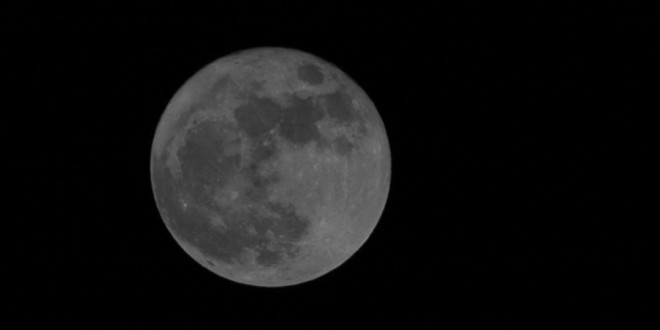Stargazers with sharp eyes will have a shot Thursday at seeing the full moon at its smallest not just for the year, but for the next almost two decades.
The Taipei Astronomical Museum said Wednesday that the full moon will not show up this small again until the year 2032.
The celestial event will take place around noon, when the moon will be some 406,000 kilometers away from the earth, the museum said.
Each full moon has a name that stems from a Native American tradition, where tribes used the lunar cycle to keep track of the seasons. The names applied to the entire month when the full moon occurred. Below is a list of the full moon names for 2014:
Jan. 15, 11:52 p.m. EST: Full Wolf Moon
This moon appeared when wolves howled outside villages vocalizing their hunger. It’s also known as Old Moon or Moon After Yule.
Feb. 14, 6:53 p.m. EST: Full Snow Moon
Aptly named for the mounds of snow that fell during the month, some tribes used this name for the January moon, while the February moon was called the Hunger Moon for its challenging hunting conditions.
March 16, 1:08 p.m. EDT: Full Worm Moon
As the snow begins to melt, the earthworms return showing signs of spring. The Crow Moon and the Crust Moon were other names given to last moon of the winter.
April 15, 3:42 a.m. EDT: Full Pink Moon
Named after the pink flowers that pop up in the spring, this moon is also called the Sprouting Grass Moon, Egg Moon, and in coastal tribes, the Fish Moon.
May 14, 3:16 p.m. EDT: Full Flower Moon
With flowers in full bloom in Spring, this moon is also called the Corn Planting Moon and the Milk Moon.
June 13, 12:11 a.m. EDT: Full Strawberry Moon
Named after strawberry-picking season, this is one of the few moons that shared the same name throughout all the Algonquin tribes.
July 12, 7:25 a.m. EDT: Full Buck Moon
Also known as the Thunder Moon and Hay Moon, the full moon in July gets its namesake from the Buck Deer that begin to grow its antlers during this summer month.
Aug. 10, 2:09 p.m. EDT: Full Sturgeon Moon
This moon is named after the large fish that is commonly caught in the Great Lakes during this month. Its reddish haze had some tribes calling it the Red Moon.
Sept. 8, 9:38 p.m. EDT: Full Harvest Moon
The strong light emitted from this autumn moon gave farmers time to work late and harvest their crops. While the Harvest Moon doesn’t always occur in September, its name is attributed to the full moon closest to the autumn equinox.
Oct. 8, 6:51 a.m. EDT: Full Hunters’ Moon
After the leaves have fallen and the fields reaped, this month is the ideal time to hunt for deer since they are fat and easy to spot. This moon takes place during the year second total lunar eclipse, which is visible over western North America.
Nov. 6, 5:23 p.m. EST: Full Beaver Moon
As beavers prepare for the winter months, tribes would set beaver traps to build their fur supply before the cold sets in. This moon is also called the Frosty Moon.
Dec. 6, 5:23 p.m. EST: Full Cold Moon
Also known as the Long Night Moon, the last full moon of the year makes its highest arc in the sky since it is diametrically opposite to the low sun.
Canadajournal/Agencies

 Canada Journal – News of the World Articles and videos to bring you the biggest Canadian news stories from across the country every day
Canada Journal – News of the World Articles and videos to bring you the biggest Canadian news stories from across the country every day

